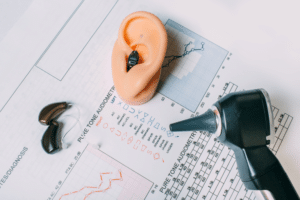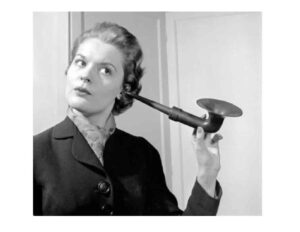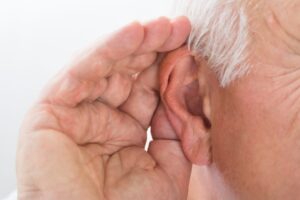Understanding the Importance of Auditory Health
Hearing is a crucial aspect of our daily lives, connecting us to the world around us through sound. Yet, it’s easy to take this sense for granted until it starts to diminish. Whether due to aging, exposure to loud noises, or underlying medical conditions, hearing loss can gradually creep up on us. Recognizing the signs that indicate a need for hearing aids is pivotal in addressing potential auditory issues and maintaining overall well-being.
Signs of Hearing Loss: 
- Difficulty Understanding Conversations: Struggling to comprehend speech, especially in noisy environments, can be a primary indicator of hearing loss. If you find yourself frequently asking others to repeat themselves or misunderstanding what’s being said, it might be time to consider a hearing assessment.
- Social Withdrawal: Untreated hearing loss often leads to feelings of isolation and withdrawal from social activities. If you’re avoiding gatherings or conversations because you find them exhausting or challenging to follow, it could be a red flag for hearing impairment.
- Increasing Volume: Do you frequently crank up the volume on your TV, radio, or electronic devices? Needing higher volumes than others to hear comfortably suggests potential hearing loss. Pay attention if loved ones comment on the loudness of your media consumption.
- Ringing or Buzzing Sounds: Tinnitus, characterized by ringing, buzzing, or hissing noises in the ears, often accompanies hearing loss. While not always directly related, experiencing persistent tinnitus warrants a visit to an audiologist for further evaluation.
- Difficulty with Phone Conversations: Struggling to hear or understand conversations over the phone might signal hearing impairment. This difficulty arises because phone conversations lack visual cues, making it harder to fill in missed words or phrases.
- Fatigue and Strain: Constantly straining to hear can lead to fatigue and mental exhaustion. If you find yourself feeling tired after social interactions or concentrating intensely on understanding speech, it could indicate an underlying hearing issue.
- Family History: Genetics can play a significant role in predisposing individuals to hearing loss. If hearing impairment runs in your family or if relatives have experienced hearing-related issues, you may be at a higher risk and should monitor your auditory health closely.
- Changes in Behavior: Loved ones are often the first to notice changes in behavior associated with hearing loss. If friends or family members express concerns about your hearing or communication difficulties, it’s essential to take their observations seriously and seek professional advice.
If you identify with any of the signs mentioned above, scheduling a comprehensive hearing assessment with an audiologist is the next step. Audiologists are trained professionals specializing in diagnosing and treating hearing-related conditions. During the assessment, they’ll conduct various tests to evaluate your hearing abilities and determine the appropriate course of action.
The Benefits of Hearing Aids:
While the thought of wearing hearing aids might seem daunting, embracing these devices can significantly improve your quality of life. Modern hearing aids are discreet, comfortable, and equipped with advanced features to enhance sound clarity in various environments. By addressing hearing loss early and proactively, you can enjoy:
- Improved Communication: Hearing aids amplify sounds, making it easier to follow conversations and engage in social interactions confidently.
- Enhanced Cognitive Function: Addressing hearing loss can help preserve cognitive function and reduce the risk of cognitive decline associated with untreated hearing impairment.
- Increased Safety: Being able to hear warning signals, alarms, and approaching vehicles is crucial for staying safe in everyday situations.
- Emotional Well-being: Regaining the ability to fully participate in conversations and social activities can boost self-confidence and reduce feelings of isolation and depression.
Ignoring signs of hearing loss can have far-reaching consequences on your overall health and well-being. By recognizing the signs early and seeking professional help, you can take proactive steps to address auditory issues and improve your quality of life. Whether it’s through hearing aids, assistive devices, or other interventions, prioritizing your auditory health is essential for staying connected to the world around you. Don’t let hearing loss hold you back – take the first step towards better hearing today.



 Local providers get many new patients from big box stores all the time.
Local providers get many new patients from big box stores all the time.



